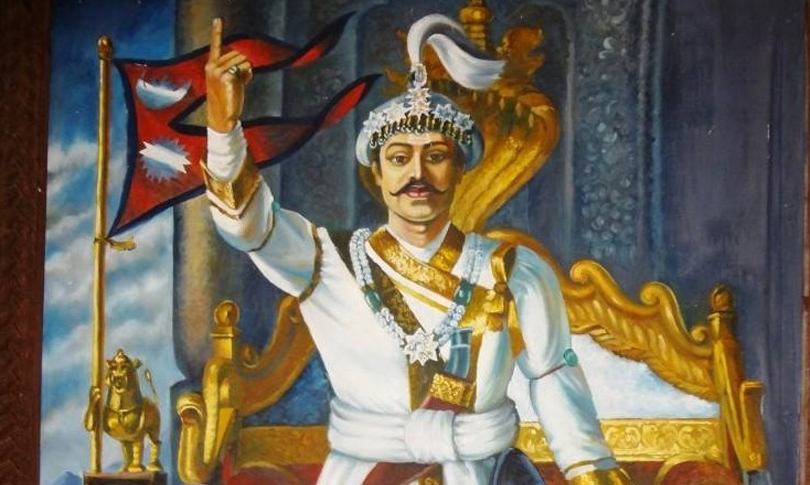Did you know that Nepal, a country known for its breathtaking landscape and rich cultural heritage, has a fascinating history behind its founding?
Dating back to ancient times, the birth of Nepal as a nation is shrouded in legends and mystery. From the unification of different tribes to the establishment of the Shah dynasty, Nepal’s foundation is a captivating tale that spans centuries.
Join us as we explore some intriguing facts about the founding of Nepal and uncover the remarkable events that shaped this enchanting nation.
Interesting Facts About the Founding of Nepal
Geographical Background
Nestled in the heart of the majestic Himalayas, Nepal boasts breathtaking landscapes and is known as the roof of the world. This landlocked country is situated between China to the north and India to the south, east, and west. Nepal’s diverse topography ranges from the lowland Terai plains to the towering peaks of the Himalayan range, including the world’s highest peak, Mount Everest. With its awe-inspiring mountains, lush valleys, and dense forests, Nepal’s geography has played a significant role in shaping its history and culture.
Historical Background
Nepal has a rich and ancient history that dates back thousands of years. The earliest inhabitants of this region were believed to be the Kiratas, who inhabited the Himalayan region around 9th century BC. Over the centuries, various dynasties ruled Nepal, leaving behind a legacy that continues to shape the nation’s identity. Let’s explore some of the fascinating historical facts about the founding of Nepal.
The Birthplace of Lord Buddha
One of the most significant aspects of Nepal’s history is its association with Lord Buddha, the founder of Buddhism. Lumbini, located in present-day Nepal, is widely recognized as the birthplace of Lord Buddha. This sacred site attracts pilgrims from all over the world who seek enlightenment and spiritual connection. With its ancient temples, monasteries, and the iconic Ashoka Pillar, Lumbini remains a pivotal place in the history of Buddhism and a symbol of peace and harmony.
Formation of the Kathmandu Valley
The Kathmandu Valley, nestled in the central part of Nepal, is renowned for its historical significance and architectural splendor. This valley, consisting of three main cities – Kathmandu, Bhaktapur, and Patan – served as the center of political, cultural, and economic activities for centuries. The formation of the Kathmandu Valley can be traced back to ancient times when it was a lake surrounded by verdant hills. Over time, the lake dried up, leaving behind a fertile basin that became the cradle of civilization in Nepal.
Early Settlements in the Himalayan Region
Before the rise of powerful dynasties, the Himalayan region witnessed the gradual settlement of diverse indigenous communities. The ancient Kiratas, comprised of various ethnic groups, laid the foundation of civilization in this rugged terrain. These early settlers practiced animism and worshipped nature. Their rich traditions and unique cultural practices contributed to the ethnic diversity that characterizes Nepal to this day.
The Kirata Dynasty
The Kirata Dynasty, believed to have ruled Nepal from around the 9th century BC, holds a significant place in its founding history. The Kiratas were renowned for their bravery, warrior spirit, and deep connection with nature. Their rule extended over several centuries, leaving an indelible mark on Nepal’s early history. Although limited historical evidence exists, the Kirata Dynasty’s influence on Nepal’s cultural heritage is undeniable.
The Lichchhavi Dynasty
The Lichchhavi Dynasty, which emerged in the 4th century AD, brought new transformations to Nepal. Known for their administrative skills, trade links, and cultivation of arts and literature, the Lichchhavis significantly contributed to Nepal’s development as a prosperous kingdom. The capital city of Lichchhavi Dynasty, called Manjushreevata or Manadeva, thrived as a center of learning and trade. The dynasty’s golden era witnessed remarkable development in various fields, including sculpture, architecture, and religion.
The Malla Dynasty
In the medieval period, the Malla Dynasty emerged as a key player in Nepal’s history. The Mallas, revered as enlightened patrons of art and architecture, shifted the political center to the Kathmandu Valley. Under their rule, the valley experienced an artistic renaissance, with the construction of magnificent palaces, temples, and pagodas. The Malla Dynasty’s contribution to Nepal’s cultural heritage is evident in the beautifully preserved historical sites and traditions that continue to thrive in the valley.
Unification Under Prithvi Narayan Shah
Nepal’s unification under a single rule marked a crucial turning point in its founding history. In the late 18th century, King Prithvi Narayan Shah, the founder of modern Nepal, embarked on a mission to unify the fragmented smaller kingdoms and principalities. With his military prowess and strategic alliances, he successfully conquered Kathmandu Valley and laid the foundation of a unified Nepal. This unification not only brought political stability but also paved the way for the establishment of a centralized monarchy.
Consolidation of Power by King Prithvi Narayan Shah
Following the unification, King Prithvi Narayan Shah focused on consolidating his power and ensuring the smooth governance of Nepal. He implemented various reforms, including the establishment of a legal framework, a standardized currency, and a strong administrative system. King Prithvi Narayan Shah’s legacy as a visionary ruler and nation-builder continues to resonate in the hearts and minds of the Nepalese people.
In conclusion, the founding of Nepal is a fascinating journey that spans thousands of years. From its geographical diversity to the rise and fall of ancient dynasties, Nepal’s history has shaped its rich cultural heritage and vibrant identity. The remarkable achievements and contributions of various rulers and civilizations have left an indelible mark on the nation’s landscape, and Nepal continues to thrive as a land of immense historical significance.

